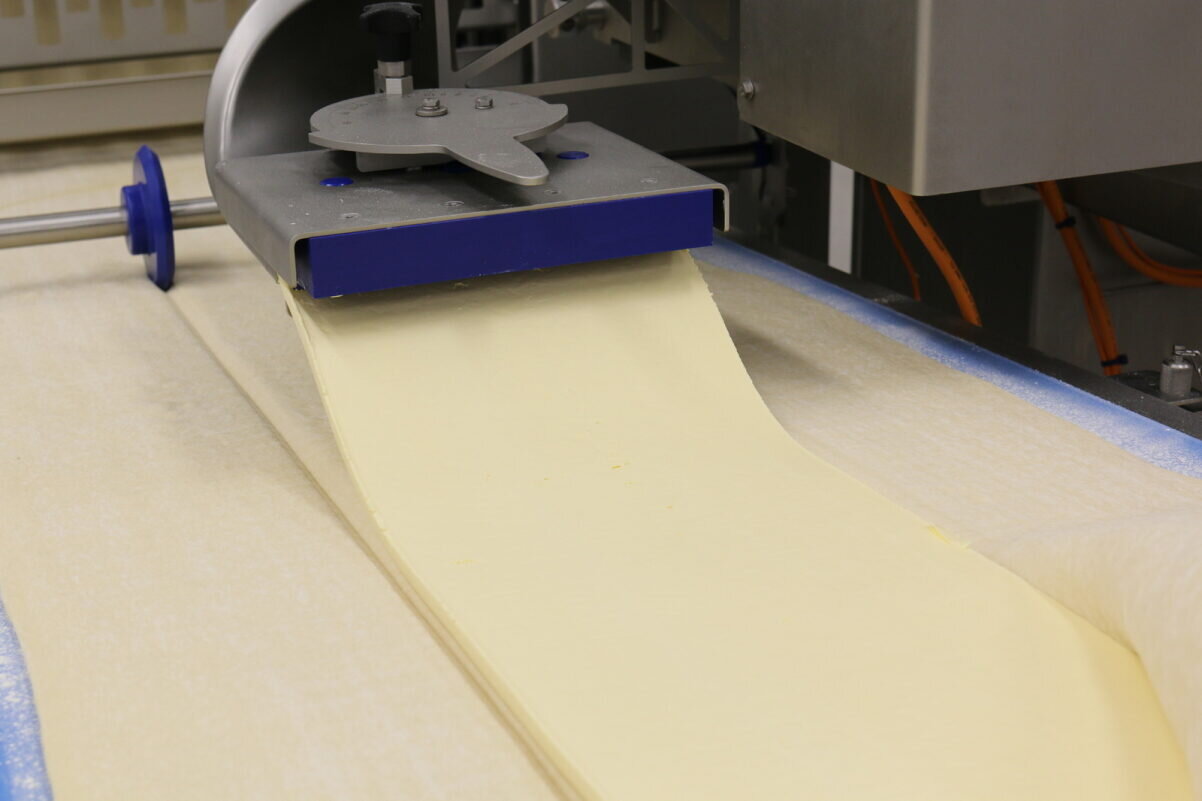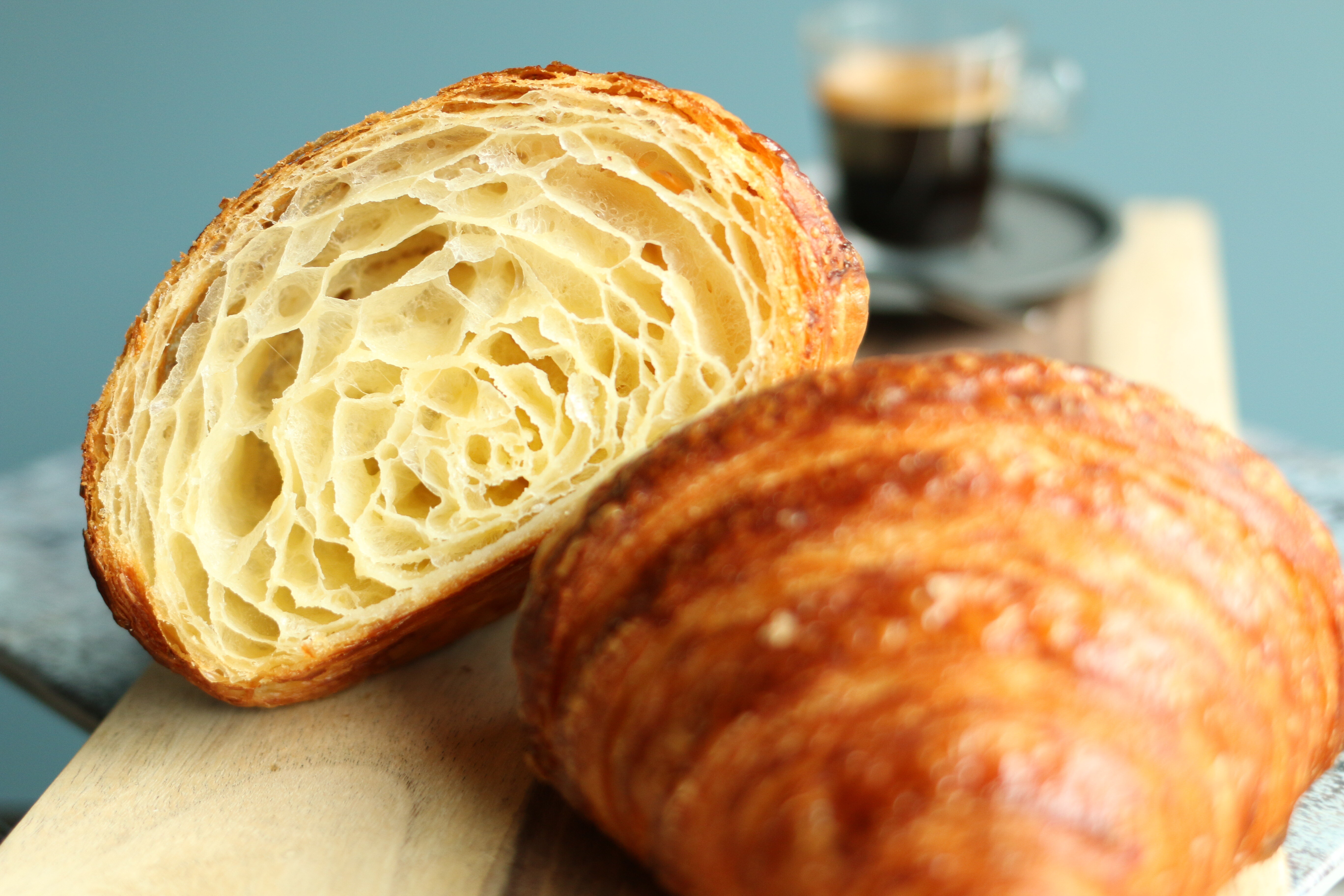
Pâte laminée Radini
FLAKY WITH A CRISP OR SOFT WITH A BITE
A variety of pastries and croissants. Lots of layers and a fine structure for puff pastry, or fewer layers with the addition of yeast for an open structure for croissants. Your products made from a dough sheet of consistent quality through precise automated laminatio
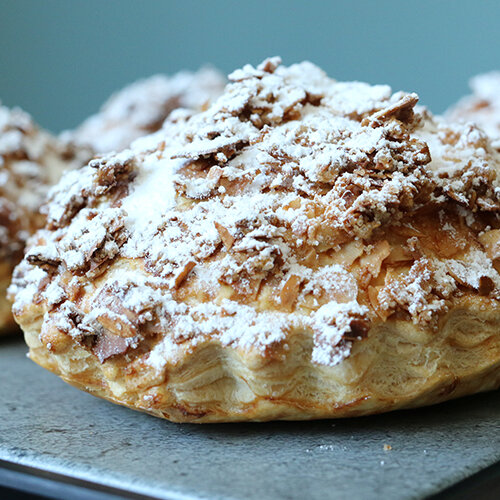
Laminated dough consists of several layers of dough, separated from each other by thin layers of fat, such as margarine or butter. A flaky structure is obtained by those layers. The formation of this flaky structure occurs during the baking process, when the water in the dough is converted into water vapour. This process causes the layers of dough to expand.
The Scottish method, also known as the Dutch-, All-in- or Blitz method. The fat substance is divided into cubes is added to the other ingredients. After mixing/kneading, the dough is formed into a sheet and laminated.
The French method
A dough sheet is produced, then a layer of fat is added to the dough sheet and folded into the dough to form two layers of dough and one layer of fat.
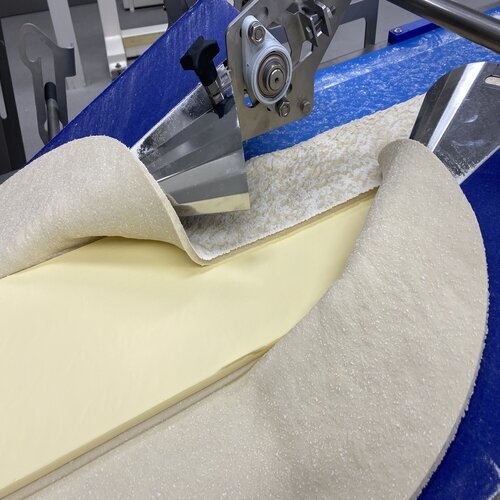
Dough types
The number of layers is connected to the type of dough you want to produce:
- Croissant dough with yeast consisting of for example 16 layers. The fewer layers, the more open the structure of the baked product.
- Danish or in German ‘Plunterteig’. Yeast-raised and often with a higher fat percentage than croissant dough. An example in this category is the Danish ‘Spandauer’.
- Puff pastry or in German ‘Blätterteig’ from yeast-free dough, is usually made from dough with 64 to 100 layers (on an industrial laminator), which gives a fine structure with a lower volume per layer. A mille-feuille, translated as ‘thousand sheets’ is a product in this category.
In general: the lower the number of layers, the more open the structure.
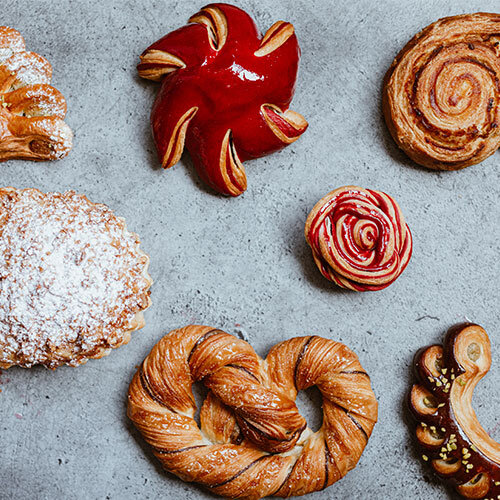
Ajout de matière grasse
La matière grasse est utilisée pour assouplir la pâte, ajouter de la saveur et, comme mentionné ci-dessus, créer la texture souhaitée. La viscosité de la matière grasse est très importante pour la consistance de la pâte. La viscosité de la matière grasse est affectée par la température, il est donc conseillé de contrôler la température de la zone de production. Il existe de nombreux types de matières grasses. Chaque matière grasse a ses propres caractéristiques. Pour contrôler la consistance pendant le processus de laminage, vous pouvez contrôler la température ambiante et opter pour un refroidissement et un repos hors ligne. Les types de matières grasses les plus courants sont
- le beurre (produit à partir de la graisse du lait)
- Margarine (produite à partir de graisse végétale)
- Le saindoux (produit à partir de graisse de porc (animale))
L'ajout de matière grasse peut se faire manuellement ou à l'aide de la pompe à graisse Radini afin d'obtenir une consistance optimale dans votre feuille de pâte.
Après avoir laminé une pâte, il est possible de fabriquer des blocs de pâte ou une feuille de pâte continue. Une ligne de fabrication de pâte universelle peut être ajoutée pour un processus automatisé. Il est également possible de façonner et de décorer les produits manuellement.
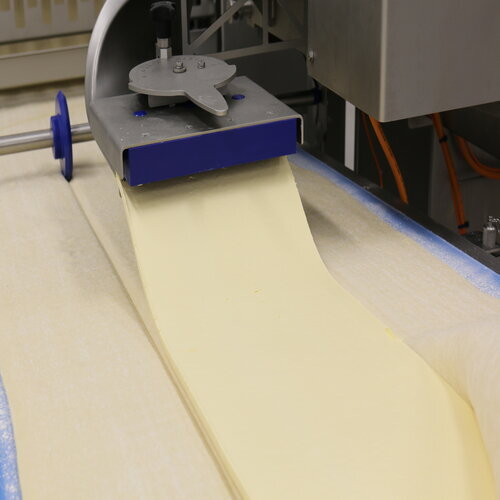
CONTACTEZ notre équipe de vente
Vous êtes intéressé par nos équipements de production ? Contactez notre équipe de vente au +33 247 870 531 ou remplissez notre formulaire de contact.

